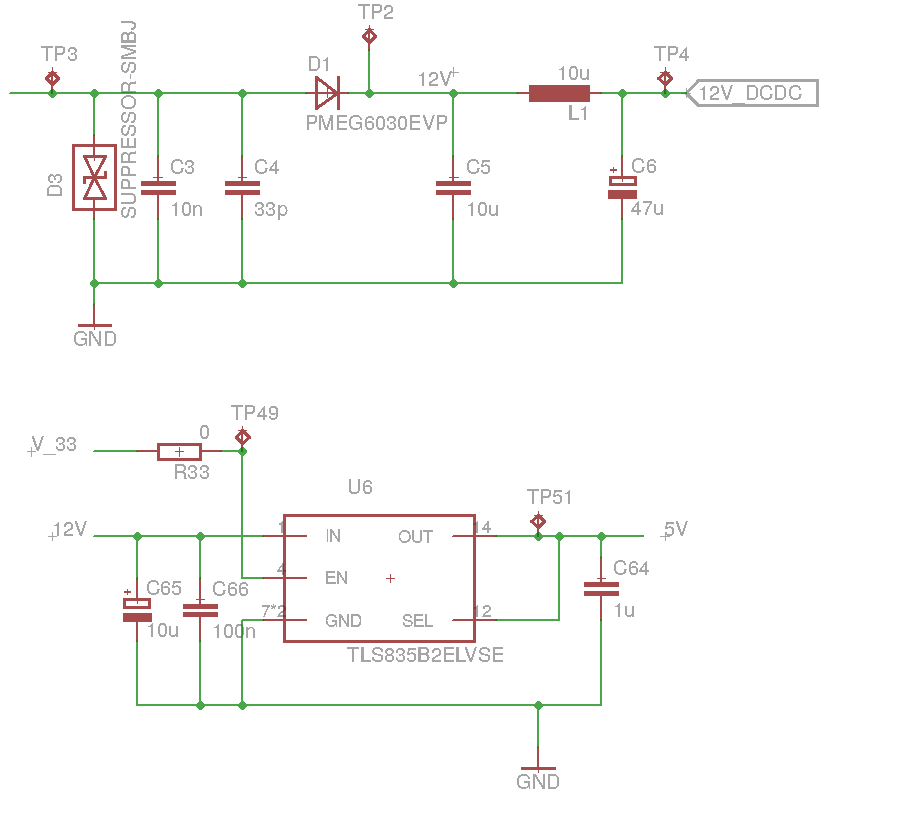Other Parts Discussed in Thread: LMR23630
Hello TI,
We are using the LMR23630-Q1 to step down 12V to 3,8 for a GSM/LTE modem. The WeBench design recommends a 200 uF cap with ESR less than 30 mOhms at the output pin of the DC/DC convertor. The reference design for the GSM modem recommends two 100 uF bypass capacitors at the VCC pins of the chip.
What should I be wary of here? The trace from the LMR23630 to the modem would be around 5 inches long.
1) Should the bypass capacitors at the modems VCC also be low ESR?
2) Should I also consider the bypass capacitors at the modem in determing the stability of the output of the DC/DC. Should I stay below the upper bound mentioned in the WeBench design?


